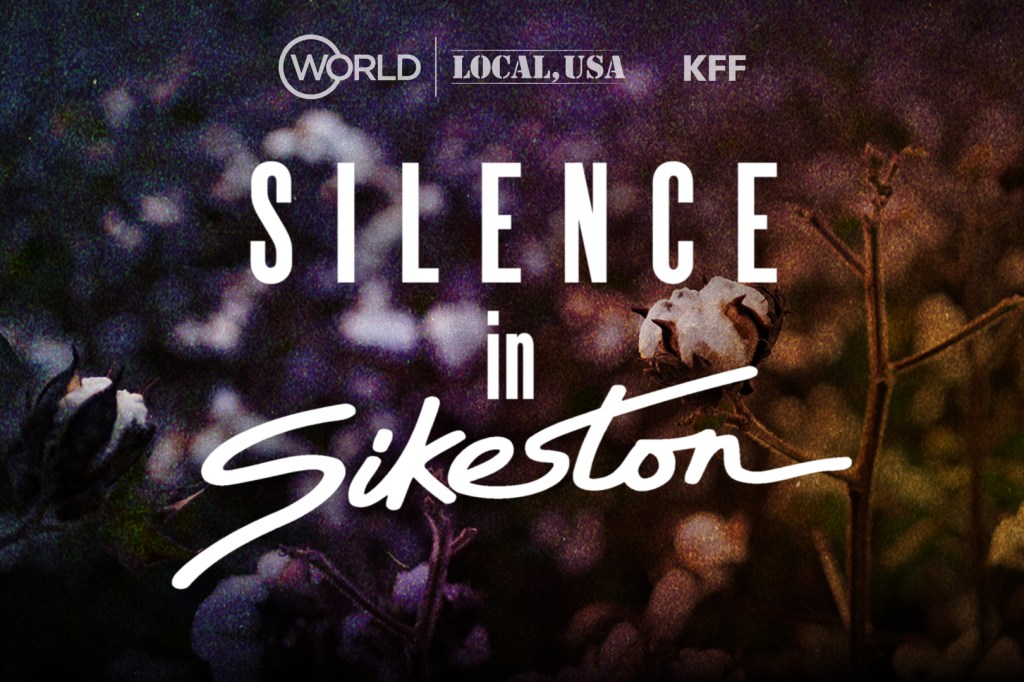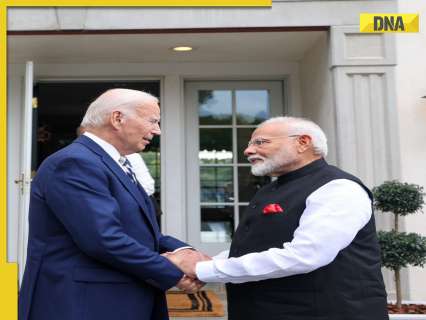explores what it means to live with racism and violence, then charts the toll on health — from hives and high blood pressure to struggles with mental health. The deaths of two Black men killed nearly 80 years apart in the same Missouri community anchor a conversation about the public health consequences of systemic bias. is the podcast about finding the words to say the things that go unsaid.
A limited series led by host and KFF Health News Midwest correspondent Cara Anthony. Next, check out the companion documentary . SIKESTON, Mo.

— For residents of Sikeston, as for Black Americans around the country, speaking openly about experiences with racial violence can be taboo and, in some cases, forbidden. As a child, Larry McClellon’s mother told him not to ask too many questions about the 1942 lynching of Cleo Wright in their hometown of Sikeston. McClellon, now an outspoken activist, wants his community to acknowledge the city’s painful past, as well as the racism and violence.
“They do not want to talk about that subject,” McClellon said. “That’s a hush-hush.” Also in this episode, host Cara Anthony uncovers details of a police killing in her own family.
Anthony unpacks her family’s story with Aiesha Lee, a licensed professional counselor and an assistant professor at Penn State. “This pain has compounded over generations,” Lee said. “We’re going to have to deconstruct it or heal it over generations.
” : If you are able, we encourage you to listen to the audio of “Silence in Sikeston,” which includes emotion and emphasis not found in the transcript. This transcript, generated using transcription software, has been edited for style and clarity. Please use the transcript as a tool but check the corresponding audio before quoting the podcast.
A lynching isn’t an isolated, singular act. The violence — and the silence around it — was a deliberate, community-wide lesson meant to be passed on. And passed down.
In Sikeston, Missouri, a 25-year-old soon-to-be father named Cleo Wright was lynched by a white mob. It happened in 1942. But you didn’t have to be there, or even born yet, to get the message.
That’s community elder Larry McClellon. He was born two years after Cleo Wright’s body was dragged across the railroad tracks to the side of town. I’m Cara Anthony.
I’m a journalist. I’ve been visiting Sikeston for years to work on a documentary film and podcast about the lynching of Cleo Wright. And the police killing in 2020 of another young, Black father, Denzel Taylor.
Cleo and Denzel, killed some 80 years apart. In the same city. In this episode of the podcast, we’re exploring how that “hush” hurts the community.
And the way it hurts people’s health. Here’s an example: Larry says it’s hard to feel safe in your hometown when Black men are killed and nearly everyone looks the other way. Growing up, Larry had a lot of questions about Cleo.
“They” being white neighbors. Despite those lessons, Larry became an outspoken activist for racial justice and police reform in Sikeston. He founded an organization here called And Justice for All.
Being vocal has come at a price, he says. It was April 2019 — Larry rushed to the headquarters of And Justice for All. The building was a total loss.
The police report says it was arson, but nothing really came of the investigation. Larry suspects it was a targeted attack — retaliation for his activism, for speaking out. Retaliation that could continue.
And still, Larry’s decided he’s not going to hold his tongue. Because keeping quiet causes its own trouble, its own hurt and pain. This is “Silence in Sikeston.
” The podcast all about finding the words to say the things that go unsaid. From WORLD Channel and KFF Health News and distributed by PRX. Episode 2: “Hush, Fix Your Face.
” Larry’s keeping on with his work in Sikeston. But all those warnings from his mother decades ago to keep quiet about Cleo’s lynching left a mark. I called up Aiesha Lee to talk about this.
She’s a licensed mental health professional and also an assistant professor at Penn State. One of the first things she wanted me to know is that silence has been used as a tool of systemic oppression in America for a very long time. Aiesha Lee says lynching — and the community terror it caused — was part of a wider effort to impose white supremacy.
One of Aiesha’s areas of expertise is how racism can impact physical and mental health — generations. She sees signs of it in her clients every day. My parents.
Grandparents. My great-grandparents. Their experiences with racial violence — and what they had to do to stay safe — shaped me.
Stuffing down injustice and pain is a tried-and-true way to cope. But Aiesha says holding hurt in hurts. She says over time those wounds add up.
A study from UCLA found experiences with racism and discrimination correlated with higher levels of inflammation in the bodies of Black and Hispanic people. It affected their immune system, their gut. Aiesha says always being on edge can rewire how the brain deals with stress.
If you don’t deal with the emotional stuff, Aiesha says, it can live in your body. ..
. and ripple through families as intergenerational trauma. That makes me wonder about my dad’s high blood pressure.
My mom’s chronic pain. About my own trouble sleeping. Despite endless conversations with my parents about this work — somehow, I was months and months into reporting on racial violence in Sikeston before I learned new details about a death in my own family.
My dad, Wilbon Anthony, knew the story for nearly a decade, but kept it to himself. Really, I shouldn’t have been surprised. My whole life I was taught in big and small ways that usually it’s better to stay silent.
There’s a risk — to self — when you speak out. I’m 37 years old — plenty grown now — but it feels like the “adults” have always tiptoed around the story of Leemon Anthony, my great-uncle on my father’s side. Leemon served in the military during World War II.
Family members remember him as fun-loving and outgoing. I was told that Leemon died in a wagon-and-mule accident in 1946. But at family reunions, sometimes I’d overhear details that were different.
My dad knew that the stories he’d heard about Uncle Leemon’s death were incomplete. That missing piece left him feeling undone. He called up family members, dug through newspaper archives online, and searched ancestry websites.
Eventually, he found Leemon’s death certificate. To show me what he found, Dad and I sat in his home office. He pulled up the death certificate on his computer.
Leemon was 29. Shot by police. Even now, I only have bits and pieces of the story, mostly from whispers from my family.
There was a wagon accident. One of my older cousins says a local white woman saw it and called the police. An article published in The Jackson Sun quoted Leemon’s father saying that Leemon had been “restless” and “all out of shape” since he returned home from the war.
What we know is that the police showed up. And they killed Leemon. When I learned about my Uncle Leemon’s death, when I got slammed by that grief and anger, I called my Aunt B — my dad’s sister Bernice Spann — and told her what my dad had found.
Even now there’s so much silence in our family around Leemon’s death. So, that’s what I’m doing. This storytelling — this journalism — is about what’s at stake for our health, and our community, and loved ones when we’re silent in the face of racial violence — and the systemic racism that allows it to exist.
So on one reporting trip to Sikeston, I asked my family to take the ride with me. We loaded into a van. And during the drive from Illinois to southeastern Missouri, my mom hummed hymns, while my daughter, Lily, napped and inhaled snacks.
Cotton is still king in Sikeston. It’s a huge part of the town’s economy, and culture, and history. So just before we got to town, we stopped at a cotton field.
Lily was just 5 back then. Lily was excited, but when I turned around, my dad, Wilbon, looked watchful. Wary.
As for lots of Black Americans, cotton’s a part of our family’s history. My mom has memories, too. As a little girl in Tennessee, around Lily’s age, my mom was already working in a field like this.
Days and days hunched over. Carrying heavy bales, working until her hands were sore. My mom’s still in grief about the violence and punishing labor — and lost opportunity — so tightly woven into all this cotton.
As a child, she hid that pain. She’d lie face down in the dirt when the school bus drove past, hoping the other kids wouldn’t see. Standing in that cotton — three generations together — I worried I was dredging up old wounds or causing new hurt.
Still, I want to try to have these conversations passing the pain and stress down to the next generation — to my daughter. Someday I need to tell Lily about lynching in America. About Cleo Wright and our Uncle Leemon.
I want her to know their names. I need to tell Lily about personal risk of encountering that kind of violence. But, truthfully, I’m not quite ready yet.
Here’s some advice I got from psychologist Aiesha Lee. I was told to keep quiet a lot when I was a kid, but I want to nurture Lily’s curiosity teach her what she needs to know to stay safe. My parents did what they thought was best.
Now it’s my turn to try to find that balance. Sometimes when Lily’s jumpy and restless, having a hard time falling asleep, we’ll sing together. At first listen, that might sound like a message to stay silent.
Actually, it’s a song enslaved people sang as they worked in cotton fields. As they dreamed and planned. It’s a call to be acknowledged.
Named. And counted. Lily has grown up a lot since we visited that cotton field in Sikeston.
She’s 7 now. I want her to know that she can speak out more freely than her ancestors could. More than I have.
Talking just might help us start to heal. Next time on “Silence in Sikeston” ..
. : The Bootheel knows what happened to him. The world — they have no idea who Denzel Taylor is.
CREDITS Thanks for listening to “Silence in Sikeston.” Next, go watch the documentary. It’s a joint production from Retro Report and KFF Health News, presented in partnership with WORLD.
Subscribe to WORLD Channel on YouTube. That’s where you can find the film “Silence in Sikeston,” a Local, USA special. This podcast is a co-production of WORLD Channel and KFF Health News and distributed by PRX.
It was produced with support from PRX and made possible in part by a grant from the John S. and James L. Knight Foundation.
The audio series was reported and hosted by me, Cara Anthony. Zach Dyer and Taylor Cook are the producers. Editing by Simone Popperl.
Taunya English is the managing editor of the podcast. Sound design, mixing, and original music by Lonnie Ro. Podcast art design by Colin Mahoney and Tania Castro-Daunais.
Oona Zenda was the lead on the landing page design. Julio Ricardo Varela consulted on the script. Sending a shoutout to my vocal coach, Viki Merrick, for helping me tap into my voice.
Music in this episode is from BlueDot Sessions and Epidemic Sound. Some of the audio you’ll hear across the podcast is also in the film. For that, special thanks to Adam Zletz, Matt Gettemeier, Roger Herr, and Philip Geyelin, who worked with us and colleagues from Retro Report.
Kyra Darnton is executive producer at Retro Report. I was a producer on the film. Jill Rosenbaum directed the documentary.
Kytja Weir is national editor at KFF Health News. WORLD Channel’s editor-in-chief and executive producer is Chris Hastings. If “Silence in Sikeston” has been meaningful to you, help us get the word out! Write a review or give us a quick rating on Apple, Spotify, Amazon Music, iHeart, or wherever you listen to this podcast.
It shows the powers that be that this is the kind of journalism you want. Thank you. It makes a difference.
Oh, yeah, and tell your friends in real life, too! , photo editor , illustrator and web producer , web producer , audience engagement producer , visual producer and visual reporter , audience engagement editor and digital strategist , national editor , managing editor , executive editor , publisher , copy chief , deputy copy chief , communications officer ..
















